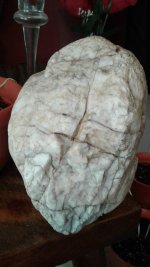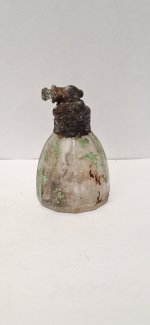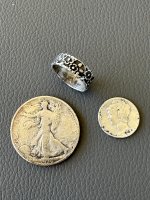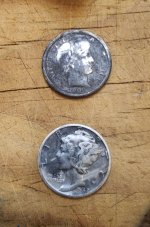ProspectingForStone
Jr. Member
- Nov 17, 2017
- 51
- 38
- Detector(s) used
- Raider Gold, Old machine of my Father's
- Primary Interest:
- Prospecting
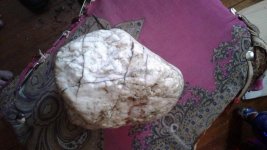
I could use some help here. This stone is white, and appears to have Iron/Copper veins running through it.
I know these are metallic veins due to some areas of green discoloration on the stone- looks like oxidization, and I have noticed these veins are capable if you will of being emptied. Or that is to say I washed the stone using a tiny bit of bleach- to experiment, and it does appear the brown coloration in the cracks of the rock is capable of coming out- is loose. It isn't dirt as there is a rust coloration to it, I believe they are iron, or copper veins.
What I can not for the life of me figure out, is what the stone itself is, the white? I've considered Quartzite, this is a very solid white colored stone. White quartz? I had found via searching on google some information on what is called white onyx, white onyx is capable of having metal veins through it, but then again, it also has parallel banding.
I showed the picture on a crystal/gem section of a spiritual forum to get their thoughts, and so far all anybody has said is it looks to them like howlite? How can that be? There is no gray bands, and these bands within this stone look to consist of metal deposits are brownish in color- rustic- like iron. How then can this be howlite? There isn't much for banding, any in the stone seems to be cracks filled with a metal- which I've determined by looking at it, is certainly not gold, so I am inclined to think iron or copper.
I am at a loss here for what this white of the stone is if anything.
Limestone?
Quartzite?
It looks very solidly white with a few areas with a touch of a more transparent look, not entirely transparent however, just a few areas that look more quartz like, but not very much.
I figured I'd come here and ask the experts you guys here. I fail to see how this stone is howlite. These are not natural bands like you'd find in an agate or jasper, they rather are metal filled veins (cracks).
Any ideas here?
Thank you.


